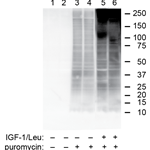Blazing the Trail for the Good Guys
SfN 2013, San Diego, CA — Published: November 30, 2013 The team of Bob, Amelia, Travis and Laura would like to use this opportunity to thank the 700+ basic researchers who took a moment to visit our booth, learn about our unique offering, and determine if they were “hat worthy.” To be hat worthy, one










